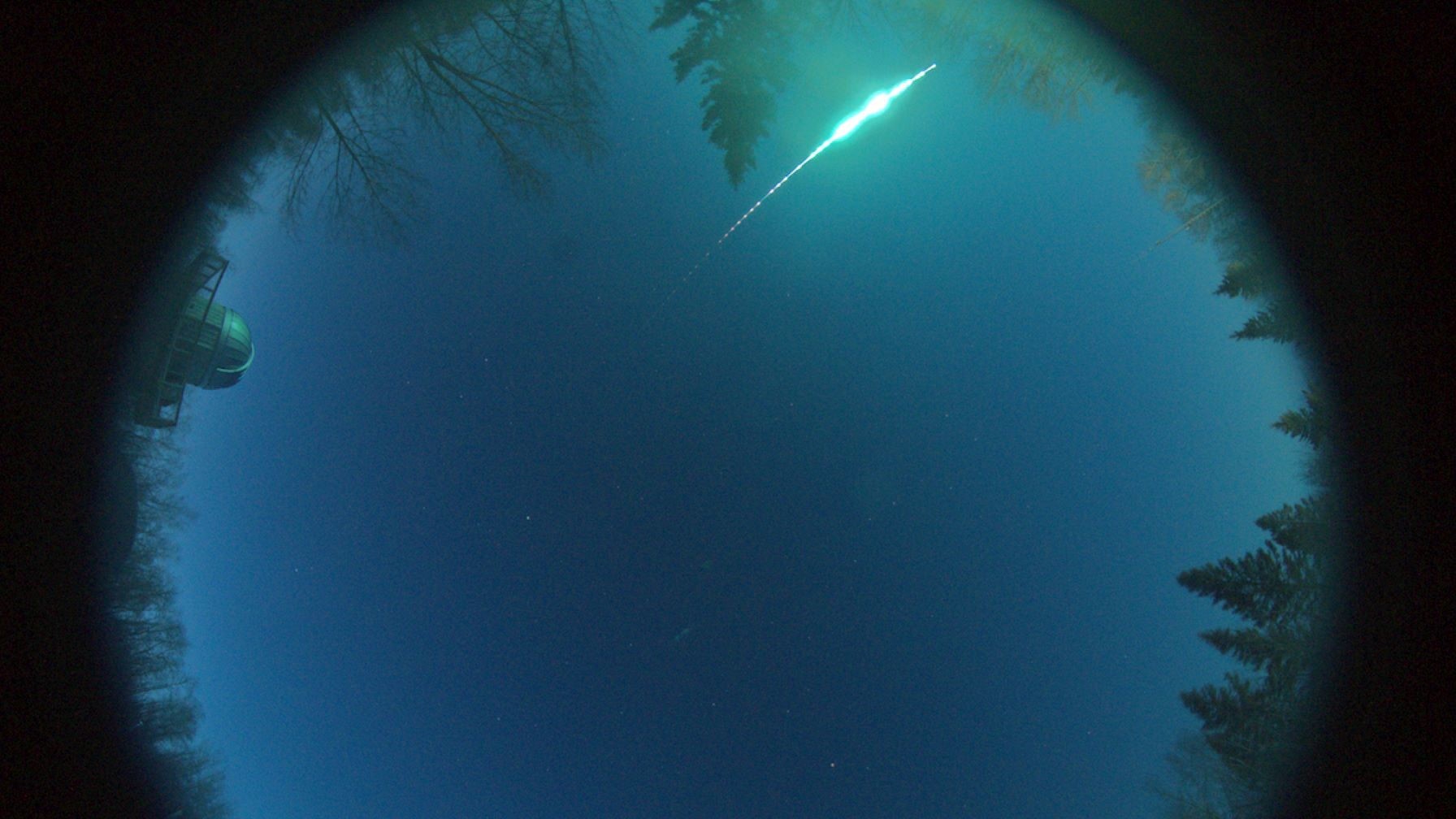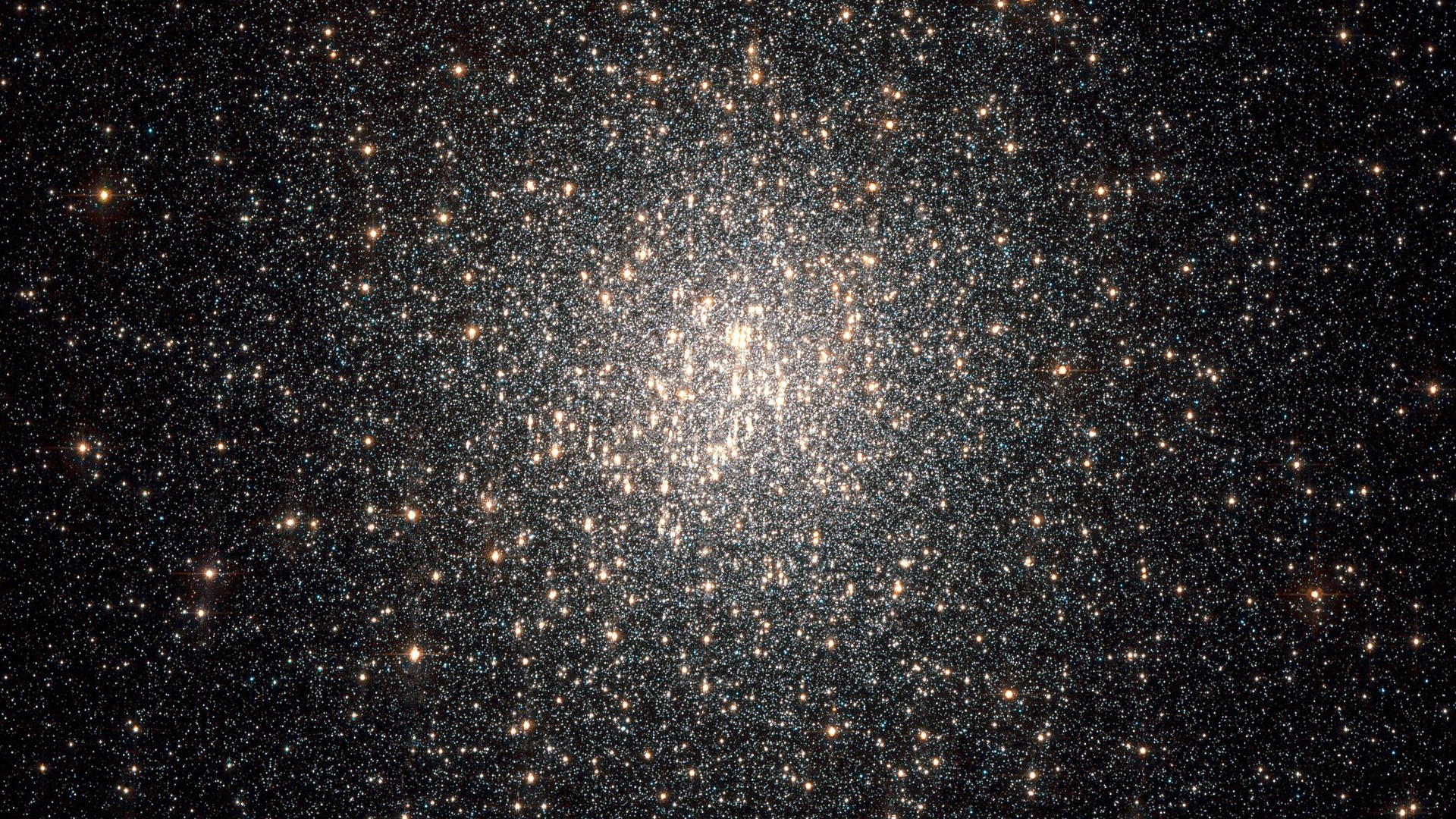Scientists trace fireball to strange rocky meteoroid from the edge of the solar system

A rocky meteoroid that exploded over Canada last year was more extraordinary than it first seemed: it originated from the outer solar system, where scientists thought only icy bodies exist.
A cavalcade of both professional and amateur astronomers caught images and videos of the meteoroid as it exploded over Alberta. By studying this data, researchers have determined that the meteoroid broke apart like a rocky object, surviving to deeper into Earth's atmosphere than icy objects on similar trajectories do. However, the analysis also suggested that the meteoroid came from the Oort Cloud, far beyond Pluto. Discovering a rocky body from this region could rewrite existing theories of how the solar system formed.
"This discovery supports an entirely different model of the formation of the solar system, one which backs the idea that significant amounts of rocky material co-exist with icy objects within the Oort Cloud," Denis Vida, a meteor physis specialist at Western University in Canada, said in a statement. "This result is not explained by the currently favored solar system formation models. It's a complete game changer."
Related: Brilliant fireball over Mississippi sparks loud booms (and satellite photos)
A cool, rocky meteoroid
Scientists have always believed that the Oort Cloud consists exclusively of icy objects. When passing stars displace these Oort Cloud objects, they head into the inner solar system as comets. As they do so radiation from the sun causes ice to change from solid to gas, blowing off gas and dust that forms the stereotypical cometary tails of gas and dust that can stretch millions of miles or kilometers.
While astronomers haven't directly seen an object in the Oort Cloud, they have seen many cometary objects that started life in the region and they've all been made of ice. That's how scientists got the idea that the outer solar system is made of only icy bodies and nothing rocky — a premise they used to develop theories about the formation of our planetary system.
Rocky fireballs are fairly commonly observed, but all previous examples have originated from much closer to Earth, making this traveler, which has journeyed vast distances, completely unexpected.
Get the Space.com Newsletter
Breaking space news, the latest updates on rocket launches, skywatching events and more!
The University of Alberta caught the grapefruit-size, 4.4-pound (2 kilograms) rocky meteoroid using Global Fireball Observatory (GFO) cameras developed in Australia. Western researchers then calculated its orbit Global Meteor Network tools. This revealed the meteoroid was traveling on an orbit usually occupied only by icy, long-period comets from the Oort Cloud.
"In 70 years of regular fireball observations, this is one of the most peculiar ever recorded," Hadrien Devillepoix, a planetary astronomer at Curtin University in Australia and principal investigator of GFO, said in the statement.
"It validates the strategy of the GFO established five years ago, which widened the 'fishing net' to 5 million square kilometers of skies and brought together scientific experts from around the globe," Devillepoix said. "It not only allows us to find and study precious meteorites, but it is the only way to have a chance of catching these rarer events that are essential to understanding our solar system."
The team now wants to explain how this rocky meteoroid ended up so far away from the inner solar system, hoping the information may help better understand the formation of the solar system's planets and Earth.
"The better we understand the conditions in which the solar system was formed, the better we understand what was necessary to spark life," Vida said. "We want to paint a picture, as accurately as possible, of these early moments of the solar system that were so critical for everything that happened after."
Follow us on Twitter @Spacedotcom or on Facebook.
Join our Space Forums to keep talking space on the latest missions, night sky and more! And if you have a news tip, correction or comment, let us know at: community@space.com.

Robert Lea is a science journalist in the U.K. whose articles have been published in Physics World, New Scientist, Astronomy Magazine, All About Space, Newsweek and ZME Science. He also writes about science communication for Elsevier and the European Journal of Physics. Rob holds a bachelor of science degree in physics and astronomy from the U.K.’s Open University. Follow him on Twitter @sciencef1rst.
